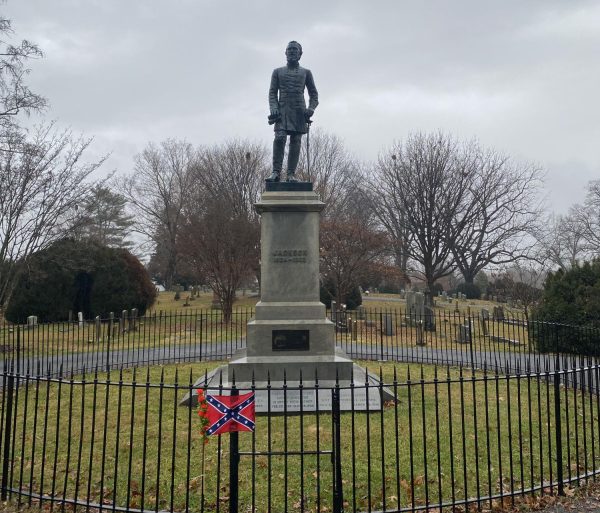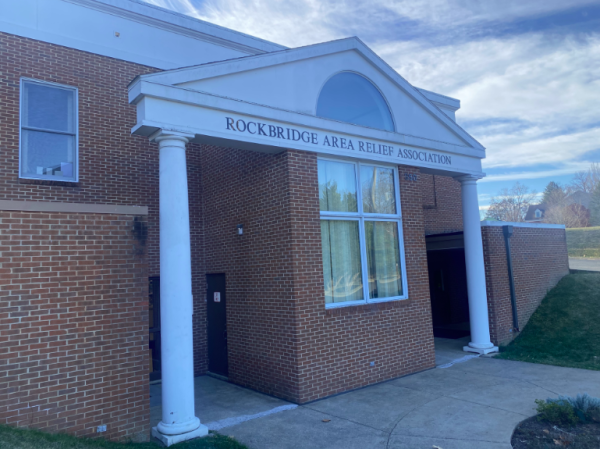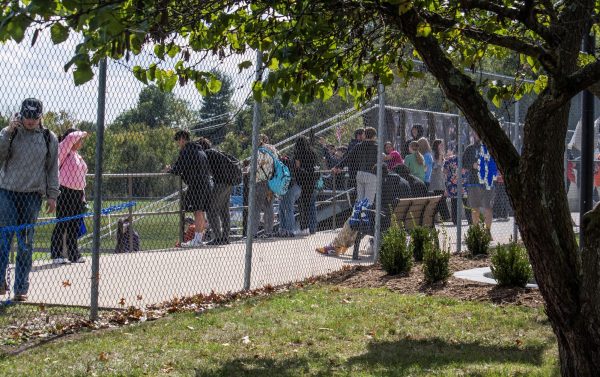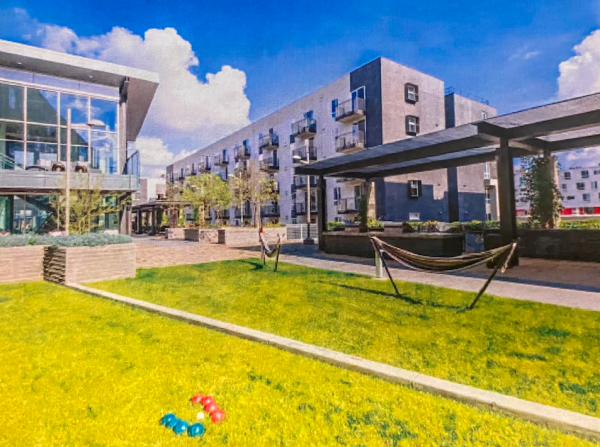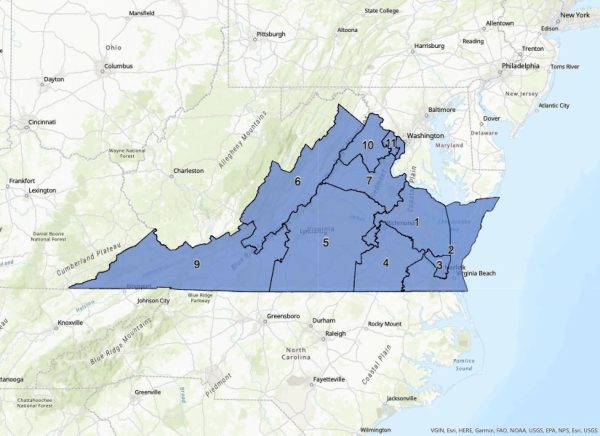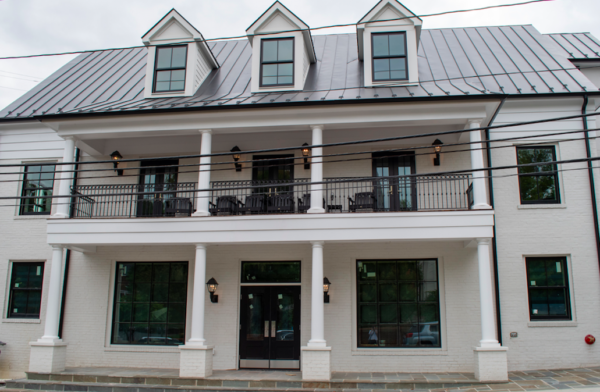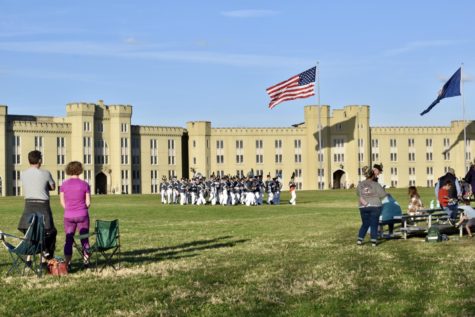Rockbridge-area schools reopen virtually
City and county schools tout new resources for students
September 22, 2020
Until a few weeks ago, schools in Lexington and Rockbridge County were planning to return to campus under a hybrid model. New guidance from the Virginia Department of Health on rising COVID-19 case counts in the area cut those plans short.
Rockbridge County Public Schools and Lexington City Schools began classes Sept. 8, with the vast majority of students learning from home via digital instruction. In light of continuing virtual circumstances, district administrators and teachers implemented a number of new measures since last spring.
Teachers and staff have received additional training in providing online instruction. Schools have divided instruction time between prerecorded, independent work and live meetings. And districts are designating resources to resolve technology and connectivity issues as families contend with different limitations.
The two local districts also made different decisions about which students to bring back to campus.
Lexington City Schools, which include Harrington Waddell Elementary School and Lylburn Downing Middle School, began the school year with completely online instruction.
But Rockbridge County Public Schools is providing students in second grade and up with remote instruction. Kindergarteners and first graders will come back in-person four days a week under a shortened school day. The county includes four elementary schools, Maury River Middle School and Rockbridge County High School.
Preschool, kindergarten and first grade students attending RCPS’s four elementary schools—Central Elementary in Lexington, Mountain View Elementary in Buena Vista, Fairfield Elementary and Natural Bridge Elementary—stepped inside school buildings for the first time since early spring on Sept. 8.
Matt Crossman, director of school services for RCPS, said teachers did their best to make early learners’ first day on campus memorable in a distanced setting
“Some of the faculty greeted students outside and tried to make it as warm and friendly, pep-rally type as possible,” said Crossman “Teachers were stationed along the way to help [kids] get to their classrooms.”
But differences were immediate and stark, Crossman said. Students began the school day lining up for their daily temperature checks. When they arrived at their socially distanced classrooms wearing masks, teachers began by explaining various safety measures, such as maintaining socially distanced lines and routine hand-washing.
At Mountain View Elementary, principal Lori Teague said younger kids have been adapting to the changes well and are more attentive towards hygiene.
Rockbridge County High School also currently has 50 students on campus, including special education students, English language learners and students whose home environments aren’t conducive to completing schoolwork, RCHS principal Mike Craft said. Craft said that they are likely to benefit from downsized classrooms and personalized instruction time.
Meanwhile, for students learning virtually, RCPS and Lexington City Schools have spent the first week fine-tuning new instructional methods and daily schedules for their students, as well as troubleshooting technology and connectivity issues for families, administrators from both districts said.
Each student in LCS and RCPS has a district-provided Chromebook, where they’re expected to attend live Zoom sessions, watch pre-recorded lectures or work through assignments on Google Classroom, a learning management system used by both districts.
District administrators spent all summer training teachers and faculty how to use digital platforms like Google Classroom and Vimeo effectively and help troubleshoot technology problems, Craft and Crossman said.
Schools in the region diverge in their balance between synchronous learning, which features live, virtual instruction, and asynchronous learning, which pertains to pre-recorded lessons and assignments. RCHS has opted for completely asynchronous learning for virtual students, a measure intended to accommodate their family responsibilities and variable schedules.
Teachers at Mountain View Elementary often sit at their computers awaiting questions from students during asynchronous learning periods so they can respond to them promptly, Teague said. But back-and-forth email exchanges, as opposed to live discussions, can hinder younger students’ learning experience, Teague said.
“What good teachers do is let students drive the discussion in the classroom,” Teague said. “You get the feedback of whether kids are catching on or not, whether you need to back up and reteach this lesson tomorrow. That is so delayed in a virtual classroom.”
There’s less of that delay at Harrington Waddell Elementary School, where students engage in synchronous learning for at least two hours a day. Those two hours include a greeting period where students have a more casual conversation about their daily lives, an effort to encourage awareness of others’ circumstances, as well as reading, writing and math lessons, HWES third grade teacher Melissa Rowsey said.
Rowsey had 100% attendance in all her Zoom lessons during the first week, and the average Zoom participation rate in all classrooms was in the upper-90% range, HWES principal Melanie Camden said. Rowsey said that so far, students’ consistent attendance even in virtual circumstances has been heartening.
“I feel like I’m getting to know my students and I’m starting to build those important relationships,” Rowsey said. “I understand that this is a struggle for many of our families who work outside of their home. They are dedicating time and developing resources so that their child can be successful.”
Camden said that HWES’s location in the heart of Lexington, where households’ network connections are relatively stable in comparison to nearby rural areas, is what enables them to conduct more synchronous learning.
“We are very fortunate that when we sent out a survey about Internet needs, we had only 3 percent of our families that were in need, which is so different than our surrounding school system,” Camden said.
Though HWES families struggle less with Internet connection, HWES staff still spent much of the first few days fielding calls from parents regarding other technology issues, including problems with their Chromebooks, Camden and Rowsey said. By Friday, those phone calls had started to decrease.
To accommodate the mounting technology challenges parents are experiencing in the area, Teague said that the RCPS IT department has significantly bolstered its efforts to provide assistance, often working nights and weekends. During the first week, IT department staff met with a parent in-person who was struggling to resolve several issues, Teague said.
Meanwhile, for households without network connectivity, especially those living in the surrounding mountains and other remote areas, LCS and RCPS are testing different solutions. Both LCS schools and RCPS schools installed new fiber-optic cables in their buildings that enable parents to access WiFi in school parking lots. RCPS is currently planning to hook up some of its old busses with a hotspot and drive them to areas with poor connectivity, Crossman said
If students’ connectivity issues persist, school administrators at RCHS are loaning flash drives that contain course materials to students as a last resort, assistant principal Scott Fleschman said. While imperfect, the flash drives ensure that students without connectivity can still watch instructional videos and complete assignments, Fleschman said.
As they troubleshoot barriers to remote learning, district administrators are also examining their next steps. RCPS schools will assess their students after the second week of classes to make a preliminary judgment on how prepared students are to proceed with grade-level content, Craft and Teague said.
In October, local school districts will also determine, based on local health guidance, if they can begin hybrid learning, a combination of virtual and in-person instruction, for most students in November. Districts have drafted health protocols to enable the shift, and for RCPS, kindergarteners and first graders are already following those protocols.
At Mountain View, for example, busses have reduced capacities, desks are placed six feet apart and class sizes are halved. Students with a temperature or those who report feeling sick are isolated in a certain location in the school nurse’s office.
“I feel like we’re already ready [to be-gin hybrid learning],” Camden said. “We have already socially distanced all of our classrooms, our protocol is in place. Things will look a little different, but we’re ready for when [more kids] are allowed in the building.”



